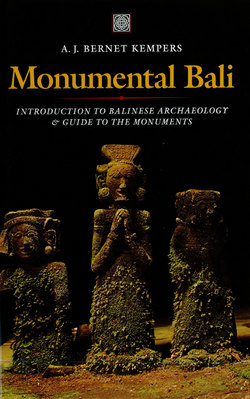Monumental Bali

Реклама. ООО «ЛитРес», ИНН: 7719571260.
Оглавление
A.J. Bernet Kempers. Monumental Bali
Отрывок из книги
MONUMENTAL BALI
Figure 1: Gunung Kawi. The "Tenth Tomb." (See also page 158; figures 49, 117.)
.....
Just a last remark on the spread of Heger I drums in the archipelago. One of the reasons for their dispersion may have been the possibility that at least some of the most costly specimens may have been part of the heirlooms of the indigenous aristocracy of North Vietnam (Tonkin) who, in the first centuries A.D., in a critical period of their existence, escaped from the Chinese armies which for some time had been invading their country and by then were starting a thorough sinicization of Vietnam, north and otherwise. This led to indigenous rebellion. Local chiefs and their followers, taking away their traditional regalia—metal drums—instead of taking refuge in the highlands around Vietnam, as others did, may have turned to insular Southeast Asia, known to the maritime mainland peoples from earlier commercial connections. Heger I, nicknamed by archaeologists "the migratory type" and a few other types or subtypes were part of the international politics of Archaic Indonesia. The Pejeng drum and the minor representatives of a group of "classic" Pejeng types on the other hand, formed an essential part of "pre-Hindu Balinese" developments.
The large drum, referred to as a starting point, must have been resting for a very long time on top of a tower-like pavilion in the Pura Penataran Sasih at Pejeng, as it does now. The present pavilion is new (its predecessor was destroyed during the 1917 earthquake and had to be rebuilt some time later.), but the location is very old. The drum is lying lengthwise and only a few old people may have seen it in a different position in the early twenties. In order to show the "heads" in their correct position (the drum standing with the tympan up) the photograph in Figure 6 has been turned 90 degrees. When being struck the drum may have been hung from a tree or pole at an oblique angle. But that would have been long ago, possibly in the Hindu-Balinese period when people still vaguely knew about drums and their magical potential. The combination of a statue and a drum-shaped pedestal (in a location at Carangsari, Badung) testifies to such a connection.
.....